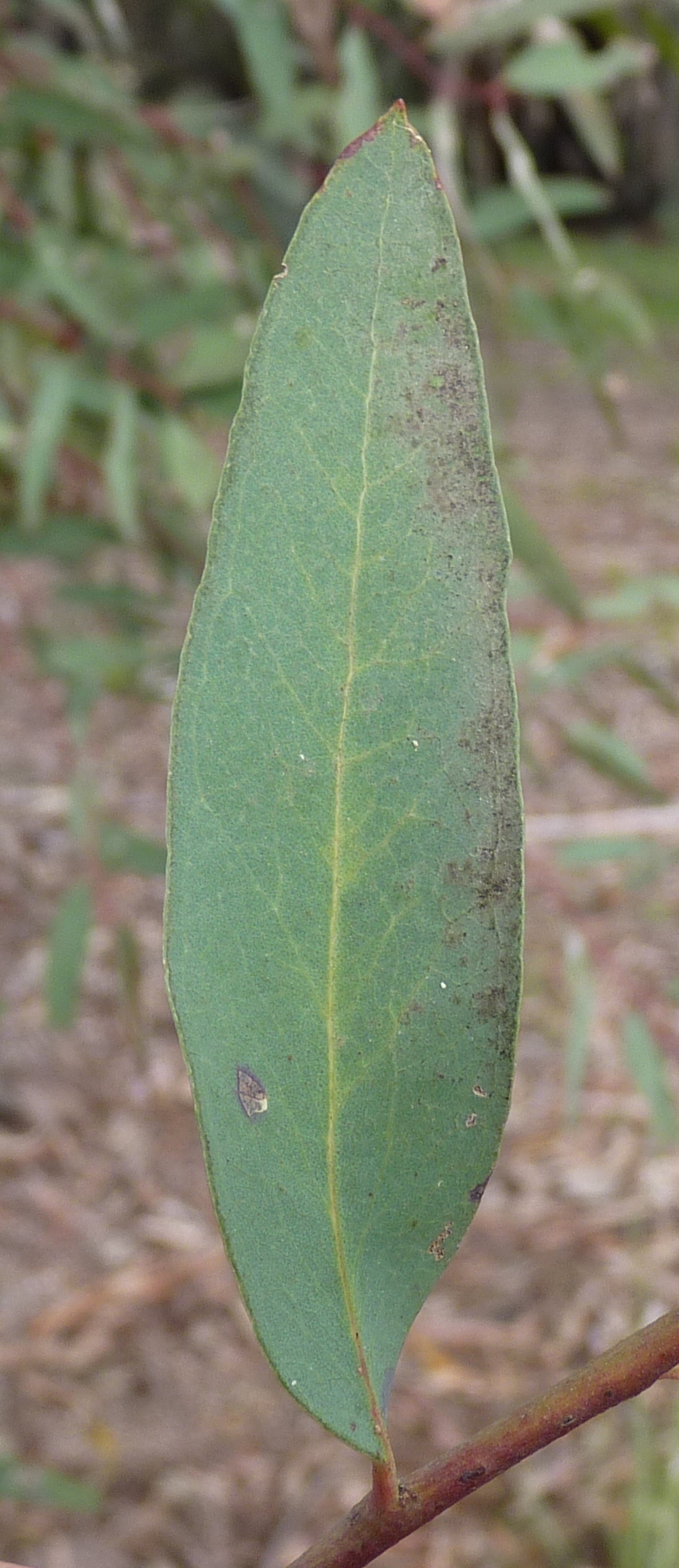
Tree to 15 m or more tall. Bark smooth and pale throughout. Juvenile leaves elliptic to lanceolate, sometimes found at the base of the stem, bristly hairy at first and maroon to red before becoming glossy green. Adult leaves lanceolate; blade mostly 7-15 cm long, 1-2 cm wide, blue-green, dull, venation visible. Leaf stalk 1-1.5 cm long. Flowers in 7s, common stalk 0.5-1 cm long, individual stalks a few mm long. Fruits 5-6 mm long, 4-5 mm wide.
This is the most widely grown subspecies and has blotched, powdery bark that is pinkish red in early summer. Grows naturally in C and E Vic and E NSW, mostly on high ground and tablelands in dry sclerophyll woodland and open woodland (cf. E. scoparia).
Vic, NSW.
Leaves relatively large and narrow; bark smooth; fruits small.
ACT: Canberra (Australian National Bot. Gds, left hand side of entrance to commemorate the formal development of the garden, ptd 12 Oct 1949 by Director of Royal Bot. Gds, Kew, UK, in the presence of Prime Minister Chifley); Forrest (Dampier Crt); Red Hill (Mugga Way); Yarralumla (Government House, ptd Princess Alexandra 26 Sept 1959, Lady Slim 25 Jan 1960, Princess Marina 27 Sept 1964).
Source: Spencer, R. (2002). Myrtaceae. In: Spencer, R.. Horticultural Flora of South-eastern Australia. Volume 3. Flowering plants. Dicotyledons. Part 2. The identification of garden and cultivated plants. University of New South Wales Press.
Created by: Val Stajsic
Updated by: Val Stajsic, June 2018
